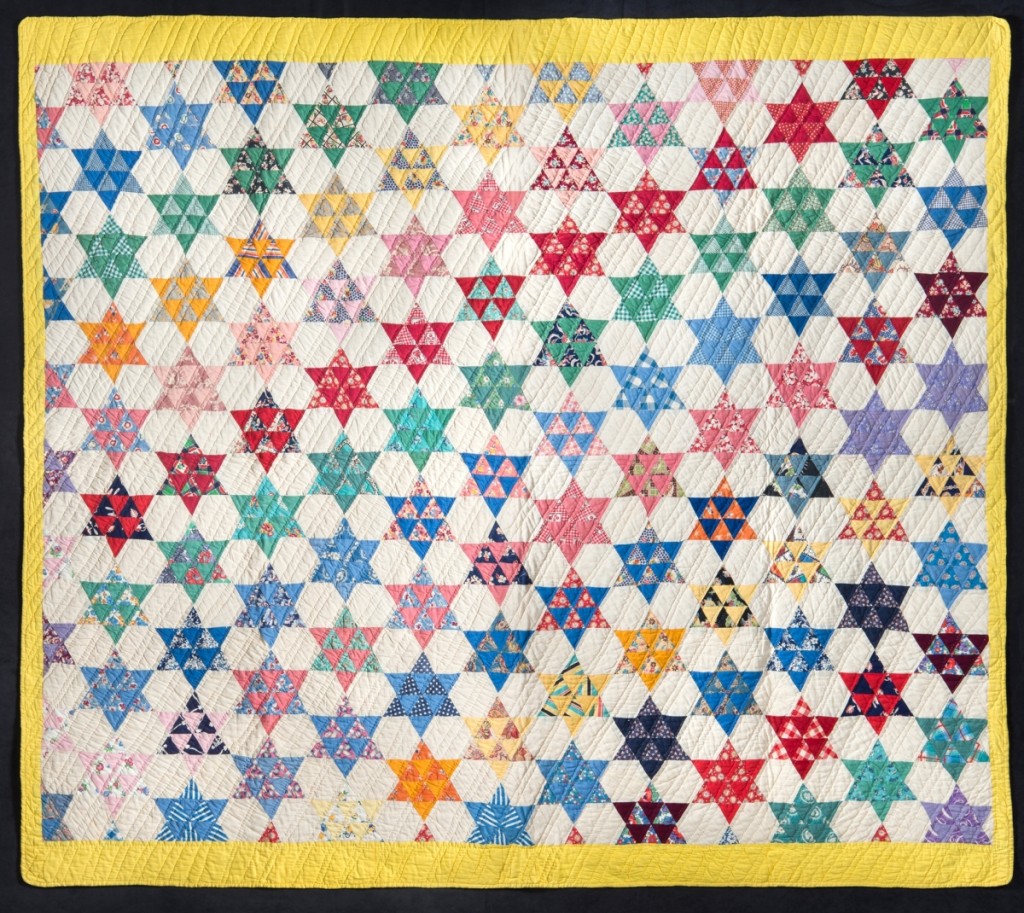NEW YORK CITY – The exhibition “Wall Power! Quilts from the Karen and Werner Gundersheimer Gift,” will open on August 6 at the American Folk Art Museum (AFAM). It will be on display for only four weeks – through September 1. Included in the exhibition will be quilts recently gifted to the museum by the Gundersheimers.
Also on view, as an added highlight, is the rare double-page religious text by Pennsylvania German fraktur artist Johannes Ernst Spangenberg (circa 1755-1814). Recently acquired by AFAM, it is one of only three Bibles that exist with the embellished pages by this artist remaining in situ (the piece was purchased at the 2019 Winter Show from David A. Schorsch-Eileen M. Smiles American Antiques).
The American Folk Art Museum is renowned for its in-depth holdings of whitework textiles, double wedding ring and appliqué quilts made over three centuries. In 2018, the museum received a gift of 21 quilts from Karen and Werner Gundersheimer that introduced new patterns into the museum’s collection, including Joseph’s Coat, Alphabet and Spider Web.
Gathered over a period of decades as the couple scoured eastern Pennsylvania, and then the Midwest and Southern United States, the quilts are graphically striking examples that embody what the couple call “wall power.” Packing a tough visual punch, “The textiles hold space and defy the deceptive softness of their nature. The strong graphic design and color sense can be likened to the work of some post-expressionist abstract painters,” Stacy C. Hollander, curator of the exhibition, said.
“The American Folk Art Museum is immensely grateful for the Gundersheimer gift, as it expands our holdings and its representations of Amish and Mennonite quilts in traditional patterns,” said Jason T. Busch, director of AFAM. “The museum’s quilt collection now numbers more than 800 works, and with this gift, it becomes even more comprehensive and a greater resource for both scholars and quilt enthusiasts.”
Quilts – America’s great art experiment – are monumental compositions in color, pattern, geometry and representation made (mostly) by women over more than three centuries. The American Folk Art Museum has been at the forefront of the movement to bring recognition to quilts as a major art form with deep roots in American life and experience. The museum’s collection is especially distinctive for unique, highly individualized expressions in this medium that is both yielding and unforgiving, challenging the maker to test the limits imposed by cutting and piecing bits of fabric.
The museum is at 2, Lincoln Square, Columbus Avenue at 66th Street. For further information, 212-595-9533 or wwwfolkartmuseum.org.









_(1).jpg)




